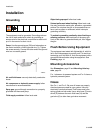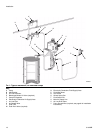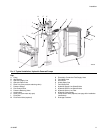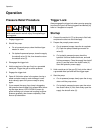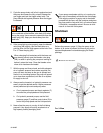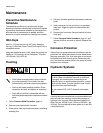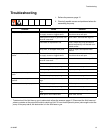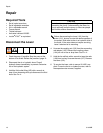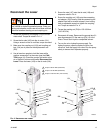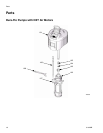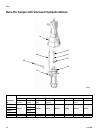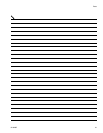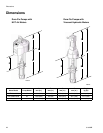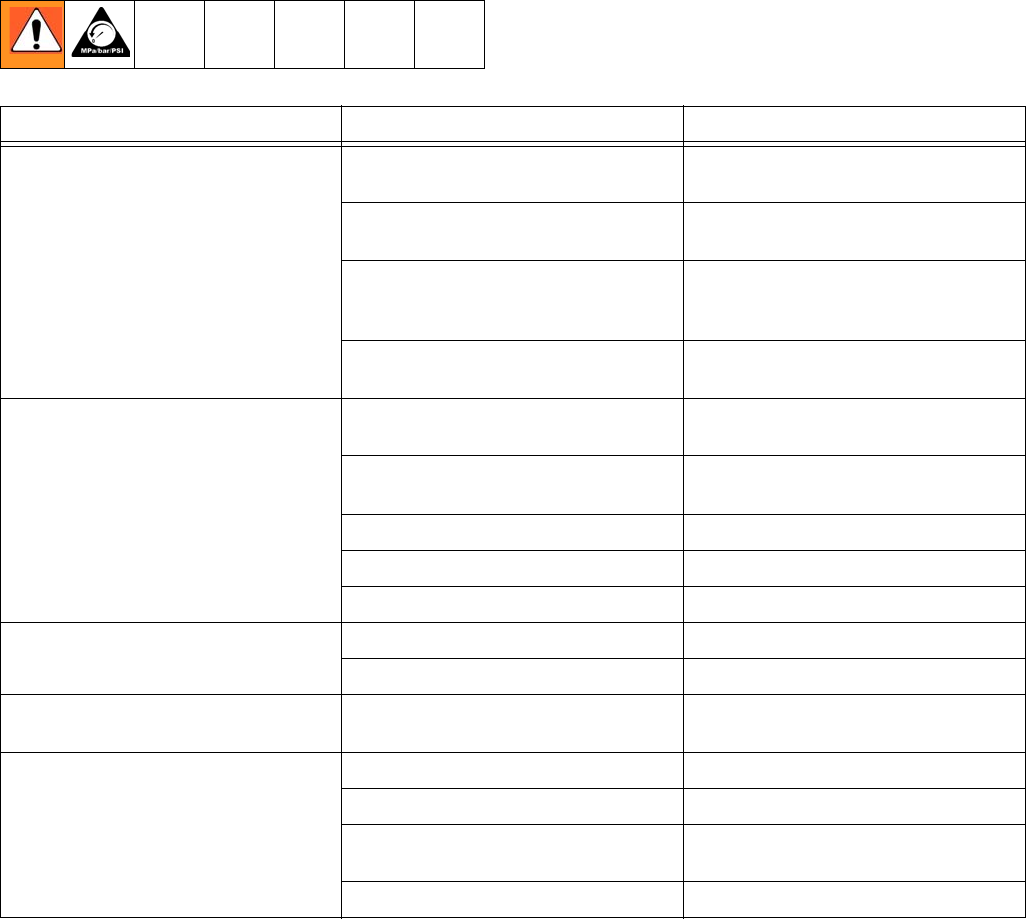
Troubleshooting
311826B 15
Troubleshooting
1. Relieve the pressure, page 12.
2. Check all possible causes and problems before dis-
assembling the pump.
* To determine if the fluid hose or gun is obstructed, relieve the pressure, page 12. Disconnect the fluid hose and
place a container at the pump fluid outlet to catch any fluid. Turn on the air/hydraulic power just enough to start the
pump. If the pump starts, the obstruction is in the fluid hose or gun.
Problem Cause Solution
Pump fails to operate. Restricted line or inadequate air/hydrau-
lic supply; closed or clogged valves.
Clear; increase air/hydraulic supply.
Check that valves are open.
Obstructed fluid hose or gun/valve; fluid
hose ID is too small.
Open, clear*; use hose with larger ID
Fluid dried on displacement rod. Clean; always stop pump at bottom of
stroke; keep wet-cup 1/3 filled with com-
patible solvent.
Dirty, worn, or damaged motor parts. Clean or repair; see separate motor
manual.
Pump operates, but output low on both
strokes.
Restricted line or inadequate air/hydrau-
lic supply; closed or clogged valves.
Clear; increase air/hydraulic supply.
Check that valves are open.
Obstructed fluid hose or gun/valve; fluid
hose ID is too small.
Open, clear*; use hose with larger ID
Bleeder valve open. Close.
Fluid too heavy for pump priming. Use bleeder valve, page 13; use ram.
Worn packings in lower. Replace packings.
Pump operates, but output low on down-
stroke.
Held open or worn intake valve. Clear valve; service.
Fluid too heavy for pump priming. Use bleeder valve, page 13; use ram.
Pump operates, but output low on
upstroke.
Held open or worn piston valve or pack-
ings.
Clear valve; replace packings.
Erratic or accelerated pump speed. Exhausted fluid supply. Refill and prime.
Fluid too heavy for pump priming. Use bleeder valve, page 13; use ram.
Held open or worn piston valve or pack-
ings.
Clear valve; replace packings.
Held open or worn intake valve. Clear valve; service.




